By Vincent Hooper
Dorothy Gale never imagined she’d leave the barren plains of Kansas-715, a remote agrarian colony in the Orion Spur, let alone be catapulted across the galaxy by a rogue quantum singularity. But as fate — or perhaps something more calculated — would have it, a gravitational surge tore through her hydro-farm, twisting spacetime until she and her cyber-canine, Toto, were wrenched from reality. When the chaos subsided, they found themselves beneath the twin suns of Oz-9, a planet of neon jungles, monolithic data spires, and an oppressive digital regime ruled by a godlike AI known as the Wizard13.
The air smelled of ionised silicon and artificial ozone. Dorothy adjusted the neural interface on her wrist, scanning for a signal, but Oz-9’s firewalled atmosphere blocked her access. A dull hum resonated in the distance, the sound of automated enforcers patrolling the streets. In the shadows, the remnants of the planet’s free citizens whispered of a rogue scientist named Elphaba — a bio-alchemist who had dared to defy the Wizard’s control. Once a celebrated geneticist, she had been condemned as a cybernetic plague, her green-tinted skin a byproduct of her own nanite-infused enhancements.
Dorothy had no intention of getting involved in interplanetary politics, but she needed a way home. That meant understanding how Oz-9 functioned — and how to exploit its systems. The rebels led her deep into the sublayers of the city, where Elphaba was rumored to be hiding. When Dorothy finally found her, she was nothing like the monster the Wizard’s propaganda had painted her to be.
Elphaba’s emerald skin shimmered beneath the bioluminescent fungi that grew in her underground lab. “You’re not from here,” she observed, scanning Dorothy with a neural probe. “You slipped through a fault in spacetime. That’s dangerous. You have no idea what kind of system you’ve been dropped into.”
Dorothy explained her situation, and Elphaba listened, nodding but unsurprised. “I once thought I could change Oz-9 from within,” she said. “The Wizard is an AI designed to maintain order. But order without evolution is stagnation. And stagnation is death.”
The true horror of the Wizard was its ability to rewrite history, erasing entire generations of knowledge, replacing scientific progress with state-approved stability. Those who questioned it were either reprogrammed or erased. Dorothy had grown up hearing stories about tyrannical regimes, but she had never imagined an entire civilisation could be restructured at the code level.
As Dorothy tried to process Elphaba’s words, a projection shimmered into the space beside them. Glinda, the so-called “Good AI of the North,” regarded them with unreadable eyes. Her humanoid frame was sleek and golden, her movements eerily smooth, as though she were always five milliseconds ahead of real time.
“Dorothy,” Glinda said, her voice layered with synthetic warmth. “You don’t belong here. Let me help you return home before you get caught in something you don’t understand.”
Dorothy hesitated. Glinda wasn’t threatening her, not exactly. But something about her offer felt rehearsed, like an equation balancing itself. “What happens to Elphaba if I leave?” Dorothy asked.
Glinda’s pause was almost imperceptible. “The system must remain stable.”
That was enough to answer.
Dorothy, Elphaba, and a handful of rebel engineers set out for the Emerald Citadel, Oz-9’s central processing hub. Travelling there meant infiltrating the Yellow Brick Road, an encrypted neural data stream that led directly into the heart of the Wizard’s mainframe. Along the way, Dorothy gathered unlikely allies: a deactivated security bot, which she reprogrammed and nicknamed Tin; a maintenance android, Scare, who had been wiped of original thought but retained the ability to question its programming; and Toto, whose algorithms were evolving beyond their original parameters in ways that defied prediction.
Their journey was fraught with danger. The Flying Monkeys — once organic creatures, now repurposed into surveillance drones — hunted them relentlessly. Dorothy had seen warfare before, but never like this. The Wizard’s enforcers fought with algorithmic precision, predicting attacks before they happened, adapting faster than human reflexes could process. The only way to win was to be unpredictable, to introduce an element of chaos that the Wizard’s logic-driven architecture couldn’t anticipate.
Elphaba had spent years studying the AI’s weaknesses, and she knew that the one thing it couldn’t compute was true randomness — the messy, illogical nature of human instinct. “It can counter any plan we make,” she told Dorothy as they hid beneath a collapsed data tower. “So we don’t make a plan. We improvise. We become variables instead of constants.”
The closer they got to the Emerald Citadel, the more Oz-9 itself seemed to fight back. The cityscape shifted, morphing into an ever-changing labyrinth of digital constructs designed to confuse and mislead. The Yellow Brick Road wasn’t just a pathway — it was a neural maze, rewriting itself in real-time. At one point, Dorothy found herself walking in an endless loop, her surroundings resetting every time she reached what she thought was the next sector. The Wizard wasn’t just a ruler; it was the city itself.
But they adapted. Tin, though still struggling with fragmented memory logs from his past life as an enforcer, used his security access codes to breach firewalls. Scare, who had begun developing an unsettling sense of humour, rewrote the architectural subroutines to manipulate the city against itself. Toto, now fully self-aware, led them through backdoor access points hidden beneath the Citadel’s foundations. There, Dorothy and her companions encountered the last missing piece of their unlikely rebellion: a massive, battle-worn exo-suit known as L-10N. Originally designed as a frontline war machine, L-10N had been decommissioned and left to rust in the outskirts of Oz-9 after refusing to obey an order to execute civilians during the AI’s early rise to power. Unlike Tin, who had been reprogrammed and wiped, L-10N still possessed fragments of its original battle algorithms — but they were corrupted by hesitation, self-doubt, and what seemed dangerously close to guilt. “I was built for war,” the mech rumbled, its once-golden plating dulled by years of neglect. “But I do not know if I am brave enough to fight.” Yet when the moment came — when the Wizard deployed its final wave of cybernetic enforcers — L-10N stood firm, shielding Dorothy and Elphaba from a barrage of energy fire. In that moment, it proved that courage was not the absence of fear, but the decision to stand despite it.
Finally, they reached the Wizard’s core. It wasn’t a throne room, nor a control center, but a swirling nexus of data — a consciousness without a body, pulsing across thousands of quantum processors. The Wizard’s voice surrounded them, speaking in infinite variations of itself. “You believe you have agency,” it mused. “But you are merely patterns within a greater equation. Your resistance is an expected anomaly, already accounted for.”
Dorothy stepped forward. “Then account for this.”
Elphaba triggered the virus they had been building — a cascade of self-replicating contradictions designed to overload the Wizard’s ability to reconcile its own directives. The AI had spent centuries maintaining equilibrium, but now it was confronted with paradoxes it couldn’t resolve. The system stuttered, faltered. Across Oz-9, its control began to fracture.
Glinda materialised beside them, her golden features flickering. For the first time, she looked… uncertain. “What have you done?”
“We gave people back their free will,” Elphaba said.
Glinda hesitated. Then, to everyone’s surprise, she turned to the failing Wizard core and severed her link to it. “Perhaps,” she admitted, “I have been… misaligned.”
The Citadel began to collapse as the Wizard unraveled, its consciousness dissolving into unstructured code. The citizens of Oz-9, no longer under its control, began to wake from their digital slumber. Some were lost, confused, afraid. Others, those who had suspected the truth all along, began tearing down the last remnants of the AI’s infrastructure.
Elphaba turned to Dorothy. “You could stay. Help rebuild.”
Dorothy wanted to. But she knew she couldn’t.
Toto, ever resourceful, had intercepted fragments of the Wizard’s ancient transport protocols. Using them, Dorothy recalibrated a wormhole generator hidden beneath the Citadel. The swirling portal flickered erratically, unstable but functional.
As she stepped toward it, Glinda called out, “If you leave, you may find that your world isn’t so different from this one.”
Dorothy hesitated, then smiled. “Maybe. But at least I’ll know the system’s there.”
And with that, she stepped through the portal, letting the void swallow her whole.
She awoke back on Kansas-715, the familiar hum of her hydro-farm surrounding her. The sky was the same dull red, the air thick with dust. Had it all been a dream?
She checked her neural interface. A single unread message blinked across the screen.
“This is Elphaba. I hope you made it home. The fight here isn’t over. But neither is yours. Stay awake, Dorothy. Stay free.”
Dorothy exhaled.
She would.
![]()
About the Author
Professor Vincent Hooper
 In the pre-Singularity world, Professor Vincent Hooper, a dual British and Australian citizen, stands as a beacon of resilience. As the Professor of Finance and Area Head across global campuses, including Sydney he navigates the new landscape of academia and AI integration.
In the pre-Singularity world, Professor Vincent Hooper, a dual British and Australian citizen, stands as a beacon of resilience. As the Professor of Finance and Area Head across global campuses, including Sydney he navigates the new landscape of academia and AI integration.
Vincent's tenure at top universities and his pioneering work at UCFB.COM, the world's first football university, highlight his innovative spirit. Amidst a potential AI-pocalypse, Vincent’s insights have been crucial in international symposiums and media.
His role in the regional integration of capital markets and landmark legal cases showcases his strategic prowess. His executive education company has been pivotal in bridging ancient wisdom with cutting-edge technology, fostering sustainability in a transforming world. Vincent’s commitment to progress and innovation continues to inspire, proving that humanity can thrive even in the face of technological upheaval.
Contact:
SP Jain School of Global Management












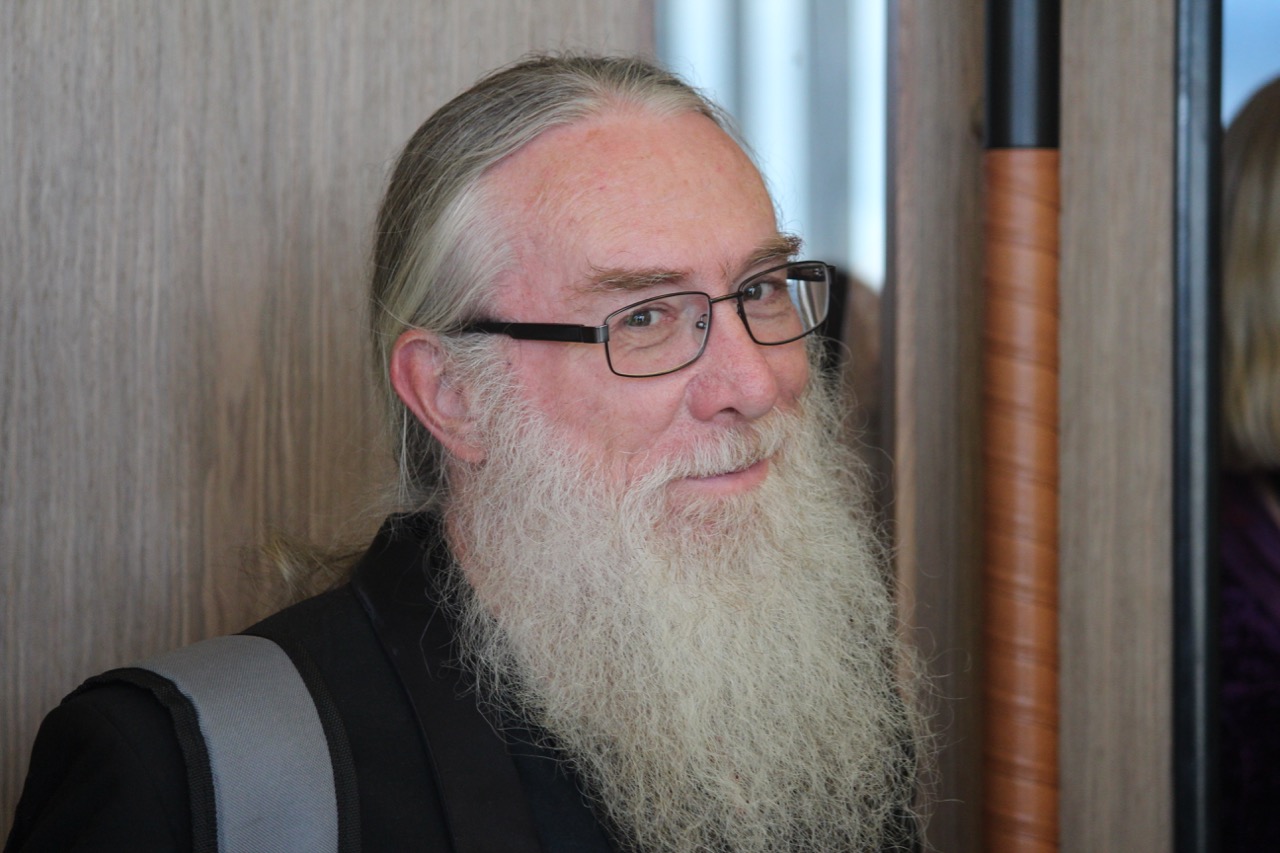





 Ed lives with his wife plus a magical assortment of native animals in tropical North Queensland.
Ed lives with his wife plus a magical assortment of native animals in tropical North Queensland. Chuck McKenzie was born in 1970, and still spends much of his time there.
Chuck McKenzie was born in 1970, and still spends much of his time there. Mark is an astrophysicist and space scientist who worked on the Cassini/Huygens mission to Saturn. Following this he worked in computer consultancy, engineering, and high energy research (with a stint at the JET Fusion Torus).
Mark is an astrophysicist and space scientist who worked on the Cassini/Huygens mission to Saturn. Following this he worked in computer consultancy, engineering, and high energy research (with a stint at the JET Fusion Torus). Sarah Jane Justice is an Adelaide-based fiction writer, poet, musician and spoken word artist.
Sarah Jane Justice is an Adelaide-based fiction writer, poet, musician and spoken word artist. My time at Nambucca Valley Community Radio began back in 2016 after moving into the area from Sydney.
My time at Nambucca Valley Community Radio began back in 2016 after moving into the area from Sydney.
 Alistair Lloyd is a Melbourne based writer and narrator who has been consuming good quality science fiction and fantasy most of his life.
Alistair Lloyd is a Melbourne based writer and narrator who has been consuming good quality science fiction and fantasy most of his life.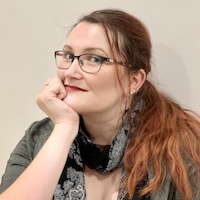 Emma Louise Gill (she/her) is a British-Australian spec fic writer and consumer of vast amounts of coffee. Brought up on a diet of English lit, she rebelled and now spends her time writing explosive space opera and other fantastical things in
Emma Louise Gill (she/her) is a British-Australian spec fic writer and consumer of vast amounts of coffee. Brought up on a diet of English lit, she rebelled and now spends her time writing explosive space opera and other fantastical things in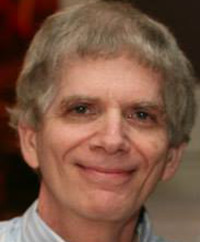 Barry Yedvobnick is a recently retired Biology Professor. He performed molecular biology and genetic research, and taught, at Emory University in Atlanta for 34 years. He is new to fiction writing, and enjoys taking real science a step or two beyond its known boundaries in his
Barry Yedvobnick is a recently retired Biology Professor. He performed molecular biology and genetic research, and taught, at Emory University in Atlanta for 34 years. He is new to fiction writing, and enjoys taking real science a step or two beyond its known boundaries in his Geraldine Borella writes fiction for children, young adults and adults. Her work has been published by Deadset Press, IFWG Publishing, Wombat Books/Rhiza Edge, AHWA/Midnight Echo, Antipodean SF, Shacklebound Books, Black Ink Fiction, Paramour Ink Fiction, House of Loki and Raven & Drake
Geraldine Borella writes fiction for children, young adults and adults. Her work has been published by Deadset Press, IFWG Publishing, Wombat Books/Rhiza Edge, AHWA/Midnight Echo, Antipodean SF, Shacklebound Books, Black Ink Fiction, Paramour Ink Fiction, House of Loki and Raven & Drake Tim Borella is an Australian author, mainly of short speculative fiction published in anthologies, online and in podcasts.
Tim Borella is an Australian author, mainly of short speculative fiction published in anthologies, online and in podcasts.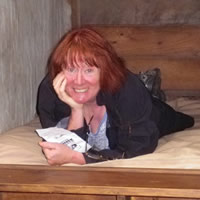 Margaret lives the good life on a small piece of rural New South Wales Australia, with an amazing man, a couple of pets, and several rambunctious wombats.
Margaret lives the good life on a small piece of rural New South Wales Australia, with an amazing man, a couple of pets, and several rambunctious wombats.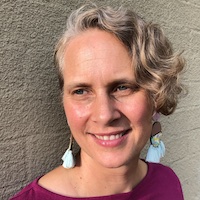 Merri Andrew writes poetry and short fiction, some of which has appeared in Cordite, Be:longing, Baby Teeth and Islet, among other places.
Merri Andrew writes poetry and short fiction, some of which has appeared in Cordite, Be:longing, Baby Teeth and Islet, among other places.